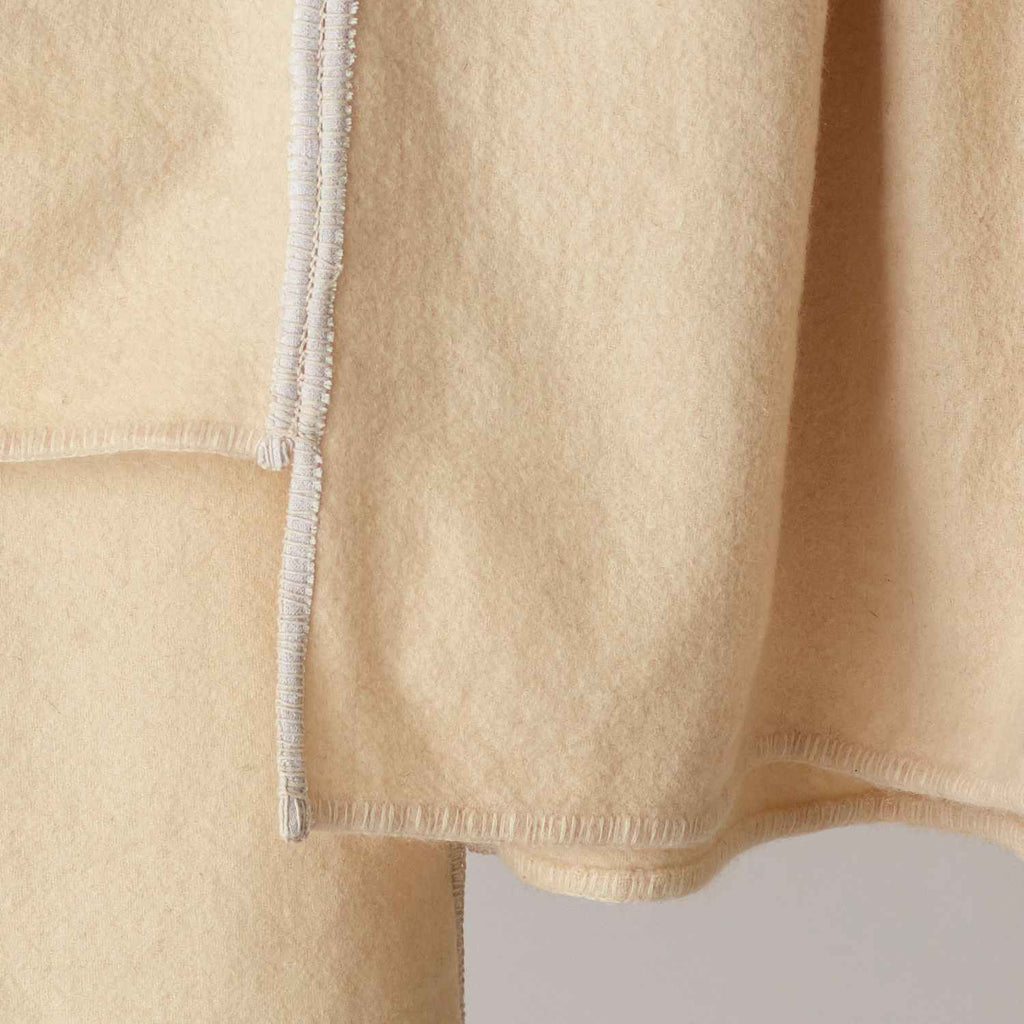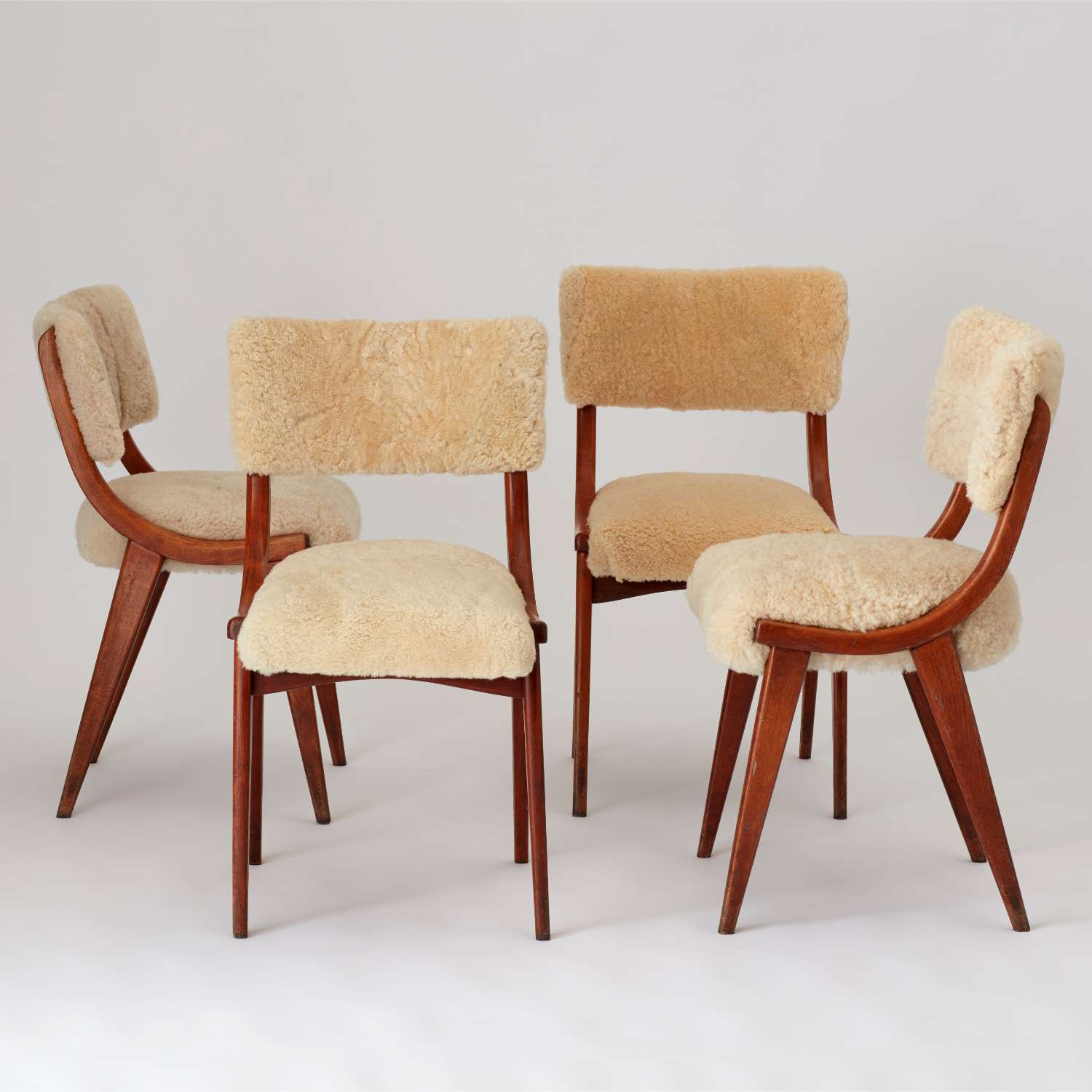Wool: natural, durable, sustainable.

"Never throw anything good away – real wool, pure silk. Put it away and wait for it to come back."
Helen Gurley Brown
Real wool is indeed ‘good’. In fact, it’s better than good; it’s exceptional and remarkable in many ways. It’s remarkable because, as a fabric, wool is functional, durable, incredibly warm and aesthetically appealing. And it’s exceptional, because its natural fibres are completely organic and biodegradable. Even if disposed of or discarded, wool simply releases its valuable nutrients back into the soil with no detrimental effects whatsoever. There is no reason, however, to throw wool away. It is, after all, widely known to be a material that can be employed for far longer and in many more ways than the majority of man-made fibres.
And not only can it be reused, but it also easily lends itself to being recycled and therefore ultimately, repurposed. At the end of its life, wool that is no longer fabric-worthy can be used to create solid, textile benches, acoustic textile tiles, fire-retardant mattress padding or car sound insulation. It doesn’t even matter if it is no longer fit for these innumerable purposes; it can still be degraded down into compost and used as rich fertiliser.
One thing is clear; wool should never end up in landfill. Buying predominately natural materials – including wool, but also silk, cotton and linen - would significantly reduce carbon emissions and decrease the amount of rubbish that is currently buried. In the U.K. alone, it is estimated that roughly 350, 000 tonnes of textile waste goes into landfill annually. It is a small consolation however, that if wool does end up where it shouldn’t, in a matter of months it will simply break back down into the carbon it first was when originally in plant form grazed upon by sheep.

Of course, wool has been widely used and recycled for hundreds of years in various different ways. A cursory glance through the history books of any culture will demonstrate its importance, value and significance irrespective of time, place or people. Revered in Roman times, spinning and weaving was viewed as a sign of womanly virtue and very much appreciated and admired. Having come from a living animal, wool was believed to contain a spirit, an ‘animus’. Consequently, it was believed to have a beneficial relationship to the gods and linked to strength, health and life itself.

In Prato, a town in the Tuscan province of the same name, knowledge of how to turn wool and other used fabrics into new materials stretches back to the 12th Century and it has been this knowledge of how to use and reuse wool which has given their own, modern-day community renewed strength, health and life. The people of Prato have harnessed and finessed the skills of their ancestors and, as a direct result of economic need, used centuries-old expertise to turn traditional wool craft into a sustainable way of life that works in contemporary times. Not only do they recycle wool and other natural materials, but they have also developed ways of prolonging the life of all sorts of man-made fabrics, preventing them from being taken to landfill and reincarnating them into creations that have sustainability and good design as basic credentials.

AU Limited Edition hand sewn recycled wool blanket
Indeed, in a recent surge all across the world, most notably in Scandinavian countries, farmers are now once more taking up the trades of their grandparents. Instead of discarding the wool because they have lacked the means to scour it (essentially cleaning and removing the smell of the sheep), they are now establishing new, viable production lines and supply chains in order to avoid wastage and enable more people to profit more from its circular nature; the ‘animus’ is being truly reanimated.

Set of four vintage Danish chairs hand upholstered in recycled sheepskin

Leave a comment